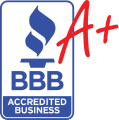Living in Honolulu, our access to fresh water from natural sources is certainly a blessing. But the mineral-rich Hawaiian water we enjoy can also present some obstacles when it comes to preserving the condition of home plumbing systems and appliances. That’s why so many local households invest in water softener systems to combat the damaging effects of hard water. Those mineral deposits may be great for health, but they can wreak havoc on everything from shower doors and faucets to washing machines and water heaters over time.
If your Honolulu home has a water softener, you know how valuable these appliances are for preserving the lifespan of your plumbing and keeping dishes, laundry, and surfaces looking their best. But just like any hardworking system, hiccups are bound to occur every so often. Whether you’re dealing with stubborn mineral stains, foul odors, or operational issues, there’s usually an underlying water softener problem at the root.
This guide takes a close look at some of the most common culprits behind water softener headaches in Hawaiian homes. You’ll learn how to identify telltale signs of various malfunctions. We’ll walk through simple maintenance tasks you can handle yourself to nip certain problems in the bud before they escalate. With some straightforward preventative measures and knowing when to bring in skilled technicians, you can keep that water softener running smoothly for years of soft, scale-free bliss!

Understanding Water Softening
Getting the most out of your water softener means staying on top of its care and catching any hiccups before they become major headaches. The first step? Understanding the basic principles behind how these systems operate. At its core, the water softening process relies on an ion exchange method to neutralize those stubborn mineral deposits.
Water softeners contain resin beads with a negative charge that attract and bind with positively charged mineral ions like calcium and magnesium as hard water passes through. These “softer” sodium ions are then released back into the water supply in place of the trapped hard mineral content. The end result is water with significantly reduced hardness and scale-building potential.
Here in Honolulu, our municipal and well water sources tend to contain higher levels of minerals like calcium and magnesium that lead to that undesirable hardness. Our island’s volcanic, limestone geology is a major contributing factor to these elevated mineral concentrations.
Investing in a quality water softening system represents an excellent preventative measure against the headaches hard water can unleash over time. With those mineral deposits neutralized, you avoid the nightmare of damaging scale buildup gradually accumulating on everything from shower heads and faucets to dishwashers and hot water heaters. Softened water flows more gently through household plumbing and appliances, minimizing that crusty residue for better long-term performance and life spans.
Identifying Common Water Softener Problems
Even with proper installation and maintenance, all water softeners are susceptible to certain issues over time. Being able to recognize the signs of the most frequent culprits goes a long way in catching problems early before they spiral into bigger repair needs.
1. Salt Bridges and Salt Mushing
These two issues both relate to improper salt levels and flow within the softener’s brine tank. A salt bridge refers to a solid salt formation that can create an empty space between the salt and water, preventing the brine solution from forming properly. Salt mushing happens when too much humidity causes the salt to dissolve and then re-solidify into a mushy mass that won’t flow correctly.
With Honolulu’s higher humidity levels year-round, local homeowners need to be extra vigilant about salt mushing. Using high-purity salts designed for water softeners and routinely inspecting bridges or clumping can help prevent these problems. Breaking up any solid formations with a brine rake and making sure the brine tank has proper ventilation are easy fixes.
2. Resin Bed Issues
At the core of any water softener is the resin bed – thousands of tiny beads coated in a solution that actually performs the ion exchange to remove mineral hardness. But these resin beds don’t last forever. Over years of constant water flow, they can become fouled by iron buildup or sediments, restricting the ion exchange process. The resin beads themselves will also gradually deteriorate and need replenishing.
Honolulu’s mineral-rich water sources mean those resin beds are handling a higher hardness load compared to other areas. More frequent resin cleaning and replacement may be required, usually every 5-7 years with diligent system maintenance. Having a professional thoroughly flush and disinfect the resin tank helps maximize its effective lifespan.
3. Brine Tank Problems
In order to periodically flush and recharge that all-important resin bed, water softeners rely on brine tanks to create a salt water solution during regeneration cycles. But issues like clogging from sediment buildup or improper brine levels can hamper this process.
With some of the potential mineral and sediment content in local Honolulu water supplies, residues have more opportunities to accumulate within brine tanks over time. Regular tank cleaning and always maintaining proper water/salt levels is crucial. Having an annual professional service helps dislodge any gunky obstructions.
4. Motor and Valve Malfunctions
While water softeners don’t require much user input during daily operation, they do rely on small motors and motorized control valves to initiate and regulate regeneration cycles automatically. When those motors or valve bodies experience issues, it throws off the system’s entire cleaning process.
Honolulu’s tropical salt air can accelerate wear on these mechanical parts if not properly protected. Ensuring weather-resistant motor covers are in good condition and having a professional inspect valve bodies annually helps catch any problems before parts seize up entirely. With simple replacements, you can avoid major water softener headaches.
5. Water Softener Not Regenerating Properly
When a water softener isn’t properly regenerating and flushing out those collected mineral hardness ions from the resin bed, it can’t effectively continue softening new water coming into the system. You’ll likely notice issues like water hardness creeping back up and mineral staining reappearing.
Higher household water usage times like when tourist seasons ramp up can throw off a softener’s pre-programmed regeneration cycles in Honolulu homes. Having the ability to adjust timer and hardness settings ensures your system can still keep up with shifting demands. Tech issues like circuit board failures may require professional repairs as well.
6. High Water Usage and Increased Water Bills
If your water softener has developed certain mechanical issues like control valve leaks or regeneration cycle problems, you could end up with the system consuming far more water than normal operation requires.
With Honolulu’s higher-than-average water costs, any spike in unnecessary usage really adds up quickly on those monthly bills. Addressing underlying issues like faulty valve body seals, line leaks, or excessive resin bed flushing is crucial to reining in water waste and utility expenses. Routine maintenance helps catch these problems early.
Maintaining Your Water Softener
Out here on the islands, we know all too well how harsh environmental conditions can take a toll on home appliances and systems if we let preventative maintenance slide. Your water softener is no exception – it needs some regular TLC to keep operating smoothly and efficiently, especially with Honolulu’s unique climate challenges.
Prioritizing routine inspections and service helps stop minor issues in their tracks before they escalate into costly repair jobs down the road. A little proactive effort ensures you get maximum performance and longevity out of your investment.
1. Regular Cleaning and Inspection
At least twice a year, you’ll want to roll up your sleeves and give your system a thorough once-over yourself. Visually check all components like the salt and brine tank levels, looking for any salt bridges forming or gunk accumulating.
Confirm no leaks or excessive wear, and use this opportunity to wipe down any calcium buildup. Our humid salt air creates the perfect storm for accelerated corrosion, so keep an eye out.
Every 12 months or so, it’s wise to have a professional come out and really get into the nitty-gritty, flushing out residues you can’t easily access and giving everything a deep sanitizing clean. Their trained eyes will catch any areas of concern too.
2. Using the Right Salt
We’ve all been tempted to just grab the cheapest bag of salt from the store, but that’s a shortcut you don’t want to take with your water softener’s salt supply. Those budget rock salts contain more impurities and residual moisture that our humid climate will turn into an absolute mess of mushing and bridging inside your system’s tank. Not ideal!
For us locals, springing for high-purity evaporated salt pellets or crystals designed specifically for water softeners pays off big time. The fewer contaminants involved, the less maintenance you’ll be dealing with long-term. Many of these salt varieties even include anti-mushing agents to stay free-flowing in sticky environments.
3. Monitoring Water Hardness Levels
At the end of the day, how soft your water actually gets is the name of the game. Periodically checking your home’s hardness levels with easy test strips ensures your softener stays properly calibrated and doing its job effectively. With Honolulu’s harder source water composition, you may need to tweak those settings more frequently.
If those test results show hardness readings rising out of the ideal soft water range, it’s a red flag that you may need more frequent regeneration cycles or a hardness setting increase. No need to go it alone either – most local plumbing and hardware retailers offer free professional-grade hardness testing if you just swing by.
Knowing When to Seek Expert Help
While plenty of basic water softener care and maintenance can be handled by diligent homeowners, there inevitably come times when professional expertise is required.
Whether you’ve got a complex repair need or are simply ready to upgrade to a new system entirely, don’t hesitate to enlist qualified local help.
1. Complex Repairs
Certain mechanical or electrical issues with your water softener may prove too intricate for DIY homeowner fixes. Examples, where you’ll want to call in the pros, include failed circuit boards, seized or damaged control valves, or breached resin tanks requiring total resin replacement.
While basic resin bed cleaning can be done yourself, anything involving opening up and handling those tiny resin beads is best left to experienced hands with the proper equipment.
2. Upgrading or Replacing Your Water Softener
Over time, as your water softener system ages and components deteriorate, you’ll eventually reach a point where upgrading to a newer, more efficient model proves more cost-effective than repeated repair expenditures.
As a general guide, if your unit is over 10-15 years old and requires significant parts replacements, it’s likely time to start shopping around.
With replacement on the horizon, this presents the perfect opportunity to reassess your home’s water hardness needs. Our island’s water composition can shift over time, so having an updated hardness test performed ensures you right-sized the new softener appropriately. Consulting local experts can provide tailored guidance on ideal sizing, features, and system capabilities based on Honolulu’s current water profiles.
Some factors they may suggest considering include:
- Higher hardness removal capacities for very mineral-rich source water
- Weather-resistant casing and components to combat humidity and salt air
- Smart WiFi monitoring for convenience
- Larger brine tanks if you have high household water usage
- Customized resin blends for effective iron filtration
The professionals will take the time to understand your unique water quality situation and suggest optimized options – ultimately providing years of reliable soft water for your household.
Keeping Your Home’s Water Softener in Peak Condition
In our mineral-rich Hawaiian environment, a properly functioning water softener represents an invaluable asset for any Honolulu homeowner. With just a little routine maintenance like cleaning, salt quality upgrades, and hardness monitoring, you’ll keep that system efficiently protecting your entire plumbing and appliance investment from damaging scale buildup.
Remember, when more complex repair needs or replacement arise, don’t go it alone – local professionals like Steve’s Plumbing and A/C Service have the specialized expertise to tackle any water softener issue. Stay ahead of potential problems and extend your system’s lifespan – give Steve a call at (808) 563-4054 today!











